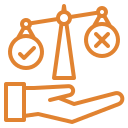We live an overwhelmed, overscheduled, and overworked life. And our workplaces are volatile, ambiguous, and unpredictable. We stretch ourselves thin between personal and professional lives and have our own share of crises, distress and challenges. To cope up with and recover from stressful and adverse life situations, we need to be resilient. Remember –when the going gets tough, the tough get going!
Resilience is one’s ability to bounce back, to be able to deal with stress, and to be able recover from a difficult situation or loss. Some people are naturally resilient (think children), while others need to build resilience. So how does one build resilience? Because, let’s face it! It is hard when you are in a difficult phase of your life …you can’t really shrug it off. Here are some tips on how to build resilience:
- Practice optimism: Power of positivity is huge. When you are dealing with a stressful or crisis situation in your life, keep repeating to yourself that this too shall pass. Keep reminding yourself of how you have successfully handled all the hard times that you have been through, such as failing an exam, break-ups, not getting a job offer, or losing a dear one. Know that you have the power to come out of the tough times by staying positive.
- Work on your confidence: When hard times hit, the first thing that breaks is our confidence. We start doubting our ability to successfully deal with the difficult circumstances. So it is important to keep working on your confidence. Take 5 minutes each day to list all successes of the day. You might not think there were any, but when you are stressed and low, even being able to go for a 15 min walk or to be able to fix yourself a healthy meal is a success. List it! Remember no success is small. Optimism leads to success, which in turn leads to increased optimism, which in turn brings more success. It is a cycle, but you need to work towards getting the cycle started.
- Ask for help: Know that you can’t do it all. You need to support of family and friends to keep you up and running in times of distress. So don’t be afraid to ask for help. And help doesn’t just mean someone running errands for you. You might need help in terms of emotional support. Someone who can talk to you to keep you motivated and boost your confidence. Or someone whom you can talk to and share your feelings with. Or a therapist who can help you navigate through your emotions.
- Eliminate negativity: When the going gets tough, it is natural for the mind to gravitate towards negative thoughts. Make a conscious effort to not get negativity take over. Stay away from negative people or people who find it hard to see a positive streak in the situations. While they might not know, they might be contributing in bringing you down so it’s best to avoid them. It is ok to set boundaries. Don’t hesitate to say “No” to such people and avoid negative conversations.
- Pray often: It doesn’t matter if you believe in god or you don’t. Pray to and connect with the energy source that you believe it. When you put your desire for the things to change for better out there in the universe, you invite all positive energies to help you through the process. Make sure to pray for good times, for healing, and not to complain for your current situation.
- Fake it till you make it: And last but not the least- Fake it till you make it. There will be days when telling yourself – “It will all be ok and this too shall pass” will seem fake. Fake it anyway. Tell yourself “All is good” anyway. Keep repeating it till you make it. Let the law of attraction work!
written by Rashim Mogha
HRDQ-U and Rashim Mogha hosted a free webinar you can watch here!













